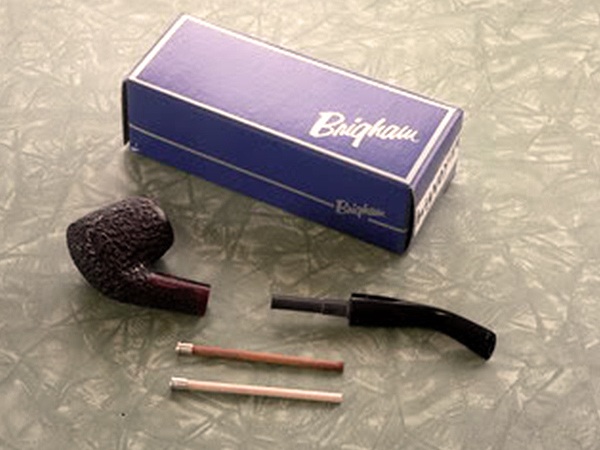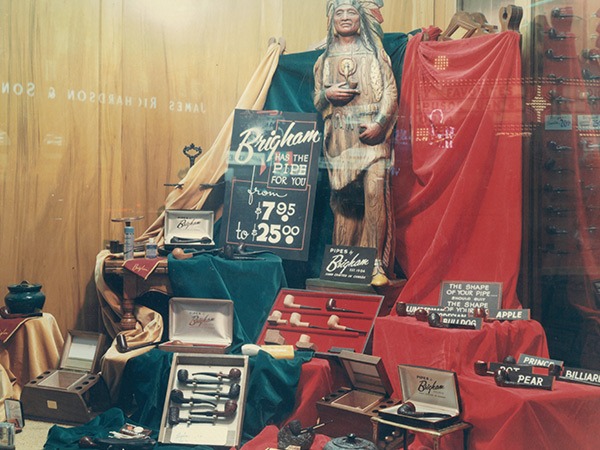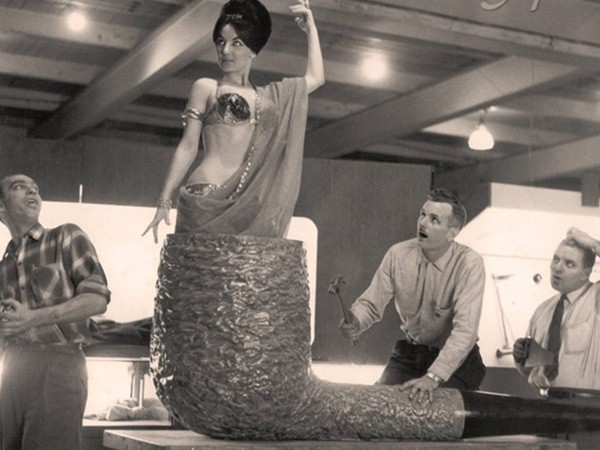



After apprenticing with an Austrian pipemaker and developing an interest in pipes, Roy Brigham starts his own pipe repair shop on Adelaide Street in Toronto.

High demand for Roy's service allows him to begin creating his own pipes, made by himself and five other craftsmen hired to help. Brigham's reputation for high quality workmanship and value begins to spread rapidly across Canada.

Roy's son Herb joined him to assist in the business. The father and son team saw an opportunity - the number one complaint of pipe smokers of all stripes was a burning sensation on the tongue known as tongue bite. If they could somehow improve the pipe smoking experience by reducing it, they may be able to produce a pipe like no other. They worked tirelessly together researching the cause and cure, the result being the one-of-a-kind Brigham Rock Maple Distillator.

Instant interest in the Distillator encouraged the Brighams to protect their invention by securing the Patent for Canada, granted this year. It will soon also be granted in several other countries worldwide.

Herb joins the army. During his time away, he manages to pursue and advance his pipe making skills by studying alongside a craftsman in England and later under a Dutch master in the Catskill Mountains.

Herb rejoins the company in Canada and improves the Brigham Distillator to its form today. Brigham pipe demand flourishes again and Brigham opens a retail shop at 82 Victoria street, marketing pipes through print ads, flyers and brochures.

Brigham, now "Brigham and Son" moves to a larger retail location at 121 King Street West. They become regular fixtures at the Sportsman Show and Royal Fair. Most pipes are now made with the Brigham "patent" and even more rapid growth ensues. It will not be long before nearly every pipe smoker in the country owns a Brigham.

By the middle of the decade there are well over 40 full time production staff creating 50,000 pipes per year. For pipe smokers of this generation, Brigham pipes not only deliver the best smoking characteristics thanks to the Distillator, the value and quality are simply incomparable to other pipes in their price range.

The demand for pipes requires a new factory to keep up. Brigham moves to Ripley Avenue, making over 100,000 pipes a year and repairing 100 pipes a day. Two prestigious retail stores are run by Brigham in downtown Toronto (11 Adelaide Street West and TD Center) while pipes are also sold through exclusive retailers (numbering 650 across Canada) including Simpsons-Sears who feature them in their annual catalogues and wish books.

Herb's son Mike joins the Brigham operation and expands the company's product line to include Pipe Tobacco and Accessories following the same principles of quality and value.

Brigham introduces mainframe computer technology. At the time this took an entire room to perform a fraction of the functions a sophisticated calculator can achieve today.

A new state-of-the-art filter machine with photo sensors and computer assisted controlling is created to improve the Distillator quality, meet increasing demand and reduce the waste created in the hand-drilling method used to this point.

Interest in pipes has been waning for several years (life is becoming much more fast paced, pipes are seen as old fashioned and tobacco consumption in general has changed). The consistently declining sales means that Brigham, for the first time ever, is forced to reduced the size of its production staff.

TD Bank asks Brigham to relinquish its retail space for the installation of Green Machines (talk about a contrast of old vs new technology!). With the pipe business in a general decline and to mitigate the need to further reduce production staff at Ripley Street, Brigham closes its last company-run retail store.

The cigar boom has commenced and Brigham's retail customer network has begun to dedicate more and more space to cigars. "Brigham Pipes Ltd" changes its name to Brigham Enterprises Inc. to reflect the widening business opportunities (beyond just pipes) while retaining its ties to its family history.

Daniel More assumes position of General Manager, expanding the Brigham portfolio to include cigars, bolstering revenue which will soon enable Brigham to making long-planned but unfunded improvements to its operations and pipe making.

Economic conditions driving demand for much lower prices encourage the first Brigham pipes made outside of Canada to appear - the made in Italy "System" pipe. After long searching for a tenon alternative to allow for a better smoking experience for those who do not use the Distillator, and to reduce broken pipe shanks and to make the pipes more lightweight, the aluminum tenon was replaced by a composite material.

Two esteemed pipe making families in Europe are trained in Brigham production techniques and methods and through them, new sources of higher quality briar are established. This begins a new era of quality improvement and design, new pipe series and prices more in line with the average income of pipe smokers in Canada.

Interest from Americans in Brigham Pipes begins to be peaked after release of the new series. As customers there begin to discover the value and unique smoking experience of Brigham pipes, Brigham USA is created to help service the demand.

A new Distillator machine is built at an expense of $150,000 utilizing modern manufacturing techniques to ensure they can continue to be produced by Brigham in Canada for another generation.

After a long hiatus from retailing, Brigham opens Brigham & MORE on Queen St. East in Toronto - a return to the traditional direct-customer relationship building that made Brigham a household name.